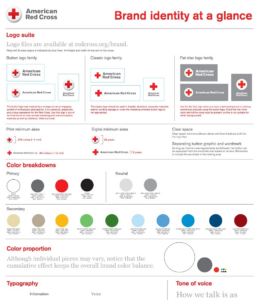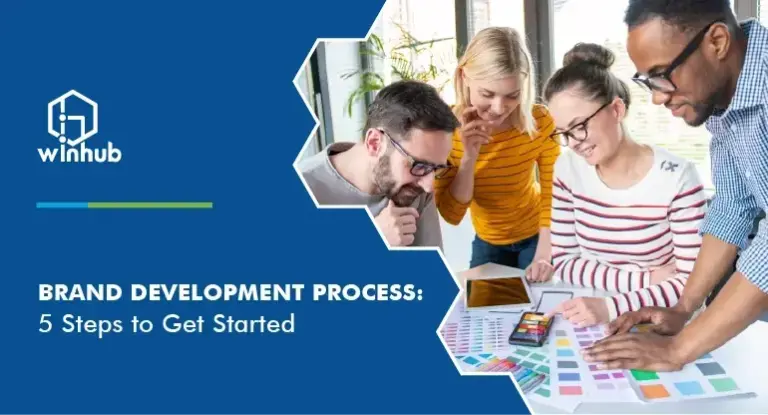Starting a small business is like embarking on an adventure. You have a vision, a passion, and the drive to make it all come together. However, establishing a solid brand is one of the most critical aspects of this journey. The brand development process is essential for defining who you are, what you stand for, and how you connect with your audience.
Let’s walk through the five steps to get started on your brand development process and set your small business up for success.
1. Define Your Brand Identity
The first step in the brand development process is defining your brand identity. This involves understanding your small business’s core values, mission and vision. Ask yourself:
- What are the core values that drive my business?
- What is the mission of my business?
- What vision do I have for the future of my business?
By answering these questions, you begin to shape a clear and consistent brand identity. This identity will be the foundation of all your branding efforts. Remember: The brand development process is about creating a persona for your small business that resonates with your target audience!
2. Know Your Audience
Understanding your audience is crucial in the brand development process. You need to know who you are talking to so you can tailor your message accordingly. Create detailed customer profiles, also known as buyer personas, to understand their needs, preferences and behaviors. Consider the following:
- What demographics define my target audience (age, gender, location, etc.)?
- What are their interests and hobbies?
- What problems do they face that my business can solve?
By getting to know your audience, you can develop a brand that speaks directly to them. This step in the brand development process ensures that your marketing efforts are effective and that your message is heard by the right people.
3. Develop Your Brand Voice and Messaging
Once you understand your brand identity and audience, the next step in brand development is to create your brand voice and messaging. Your brand voice is the tone and style in which you communicate with your audience. It should reflect your small business’s personality and values.
Consider whether your brand voice should be:
- Professional and formal
- Friendly and conversational
- Inspirational and motivational
- Humorous and fun
Your messaging, on the other hand, is the content of what you say. It should consistently convey your brand’s values and resonate with your audience. This step in the brand development process ensures that your communication is cohesive and effective.
4. Design Your Visual Identity
The visual elements of your brand are just as important as your messaging. The visual identity includes your logo, color scheme, typography and overall design style. These elements should be consistent across all your marketing materials and reflect your brand’s personality. In the brand development process, your visual identity plays a crucial role in creating brand recognition and building trust with your audience.
Here are some tips for designing your visual identity:
- Choose colors that evoke the right emotions and have an appropriate contrast.
- Select fonts that are easy to read and align with your brand’s personality.
- Design a logo that is simple, memorable and versatile.
Remember, the brand development process is about creating a cohesive and recognizable brand that stands out in the minds of your customers.
5. Implement and Maintain Consistency
The final step in the brand development process is implementation and maintenance. Once you have defined your brand identity, developed your voice and messaging and designed your visual identity, it’s time to implement these elements across all your marketing channels. This includes your website, social media profiles, business cards, packaging and any other touchpoints with your audience.
Consistency is key in the brand development process. Ensure that all your branding elements are aligned and that your message is consistent across all platforms. This builds trust and recognition with your audience.
To maintain consistency, consider creating a brand style guide, such as the example below. This document outlines the specifics of your brand identity, voice, messaging and visual elements. It serves as a reference for anyone involved in creating content for your brand, ensuring that your branding remains consistent over time.

Remember, the brand development process is not a one-time task. It’s an ongoing effort that evolves as your small business grows. Stay true to your brand’s core values, understand your audience and maintain consistency in your communication and visual identity. By following these five steps in the brand development process, you’ll be well on your way to creating a powerful and lasting brand for your small business.
Why is Brand Development so Important?
The brand development process is crucial for small businesses because it establishes a unique identity that sets them apart from competitors. A well-defined brand communicates a business’s values, mission and personality, creating a lasting impression on customers. This differentiation helps attract and retain loyal customers who resonate with the brand’s message (LinkedIn).
A strong brand fosters trust and credibility, which are essential for small businesses looking to build a solid customer base and establish their presence in the market. Consistent branding across all channels enhances recognition and reinforces the business’s reputation, making it easier for customers to choose their products or services over others.
Ultimately, the brand development process is not just about creating a logo or a tagline; it’s about crafting a cohesive and compelling narrative that connects with the audience, drives engagement and supports long-term growth. Investing in brand development is a strategic move that can significantly impact a small business’s success and sustainability.
Want more help getting started? Contact WinHub today!



